Less than nine years after the previous coronation, a new monarch was crowned. Edward VII died on 6th May 1910 and was succeeded by his second son, George Frederick Ernest Albert, who became George V (the first son, Prince Albert Victor, had died in 1892). The new king and his wife, Mary, were crowned King and Queen of the United Kingdom and the British Dominions, and as Emperor and Empress of India on Thursday 22nd June 1911.
Coronation Day in Badsey
The children of Badsey Council School were given a week’s holiday for the coronation. Before the pupils broke up for the holiday, each child was given a Coronation cup and saucer and Mr Eyres Monsell, the local MP, gave a Coronation medal to each child.
Coronation day began at Badsey with a special service, Reverend W C Allsebrook officiating. The July Parish Magazine tells us that the service consisted of the Office of Holy Communion with special prayers for the King and Queen, and in place of the sermon, the authorised address describing the chief features of the ceremonial in Westminster Abbey. There were 34 communicants.
The Evesham Journal of 24th June 1911 gave a much fuller account of the day’s celebrations, beginning:
The inhabitants of Badsey were among the first in this district to consider the question of celebrating the Coronation in a loyal and becoming manner, and they are to be congratulated most heartily upon the success which attended their festivities.
The secular festivities began, in excellent Old English fashion, with a dinner in Mr Sladden's barn, where 200 parishioners sat down to an excellent fare. The tables were daintily spread and the walls of the building tastefully decorated in an appropriate manner by many willing hands. Grace having been sung in chorus before and after dinner, the Chairman of the Parish Council, who presided, proposed the health of the King and Queen, referring in a few words to the bond throughout the ages which is forged by successive Coronations and their attendant local festivities. The toast was fervently received and drunk by all present.
The article went on to say that, after dinner, a charming display was given by the schoolchildren in a field lent by Mr Brewer. They had been carefully trained by the Headmaster, Mr John Macdonald, and his daughter, Miss Maggie Macdonald, and other teachers on the staff. To the accompaniment of Mr Alcock's string band, the children sang Kipling’s recessional hymn (Rudyard Kipling had originally composed this for Queen Victoria’s Diamond Jubilee in 1897). There then followed a patriotic chorus entitled "The United Kingdom", in which the four nationalities were represented each by a boy and girl in the costume of the respective countries.
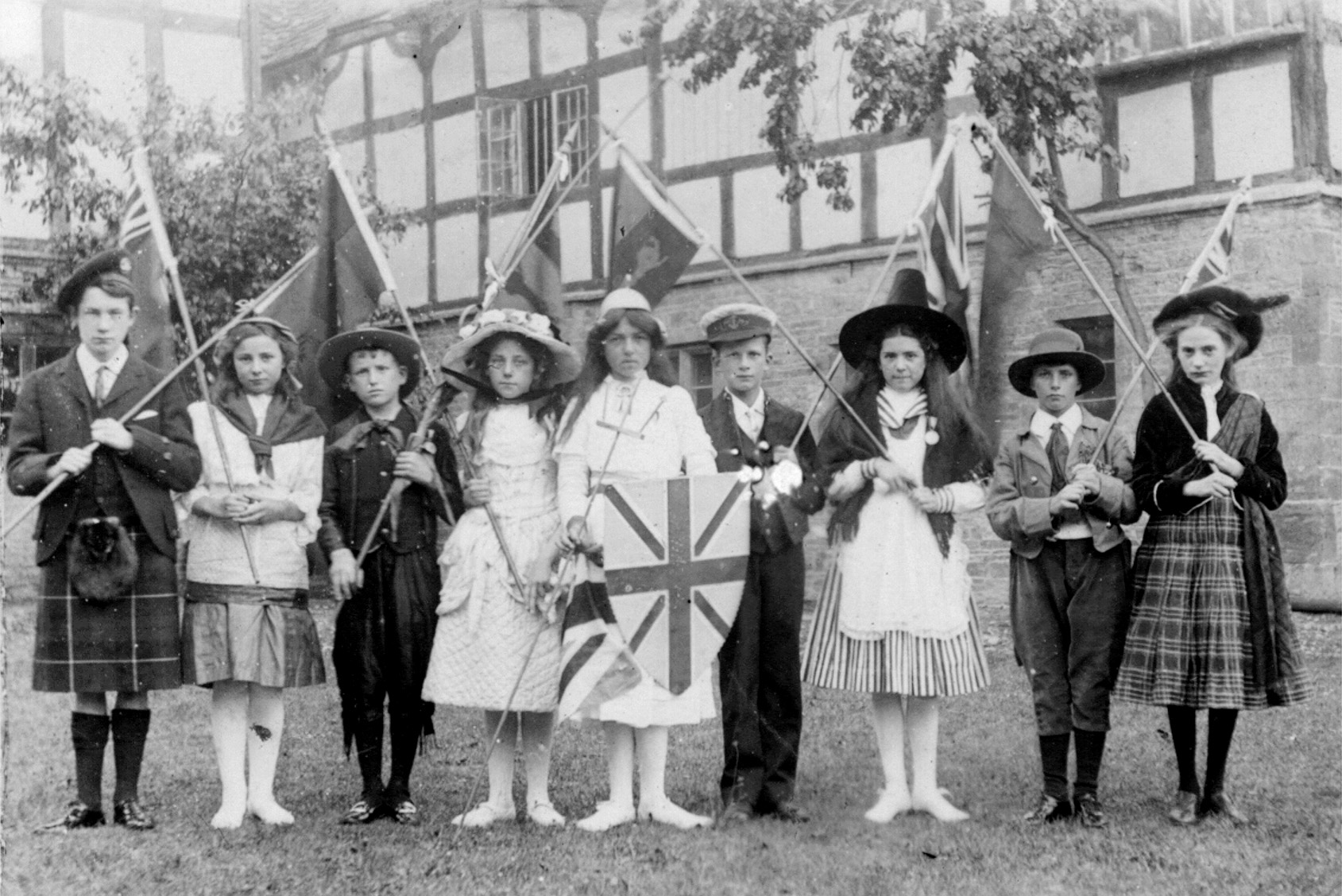
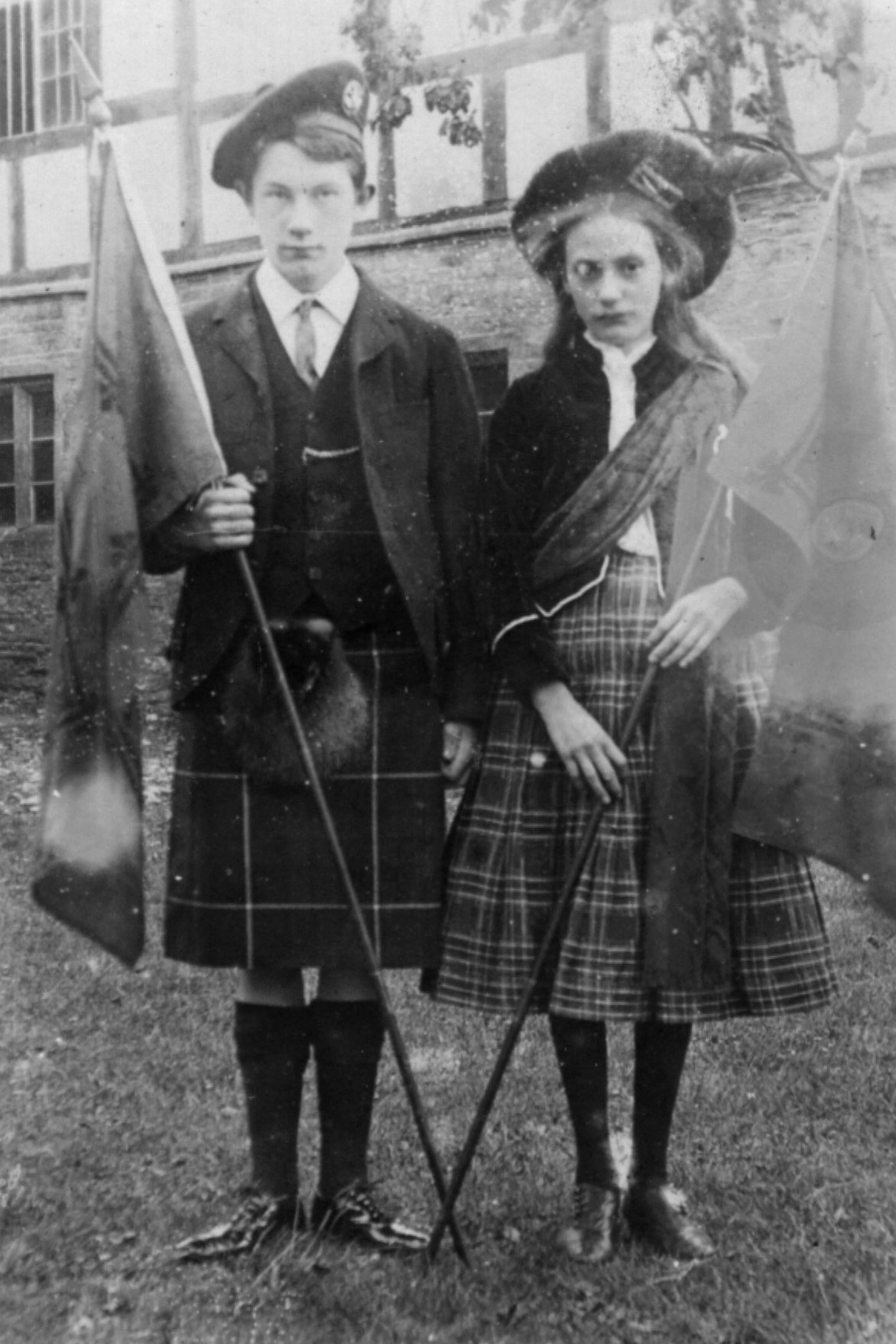
The “Clap Dance”, a figure from the old Morris dance, was performed and a flag drill, accompanied by a chorus of children’s voices. A tea was then given for the children in the Council Schools and one for adult parishioners in Mr Sladden's barn which was again filled to overflowing.
During the afternoon there were various sports and pastimes for folk of all ages, and after tea the children repeated part of their previous performance, finishing with a maypole dance. The photos below show that this took place at the back of the Manor House which was then uninhabited. The evening concluded with open-air dancing.
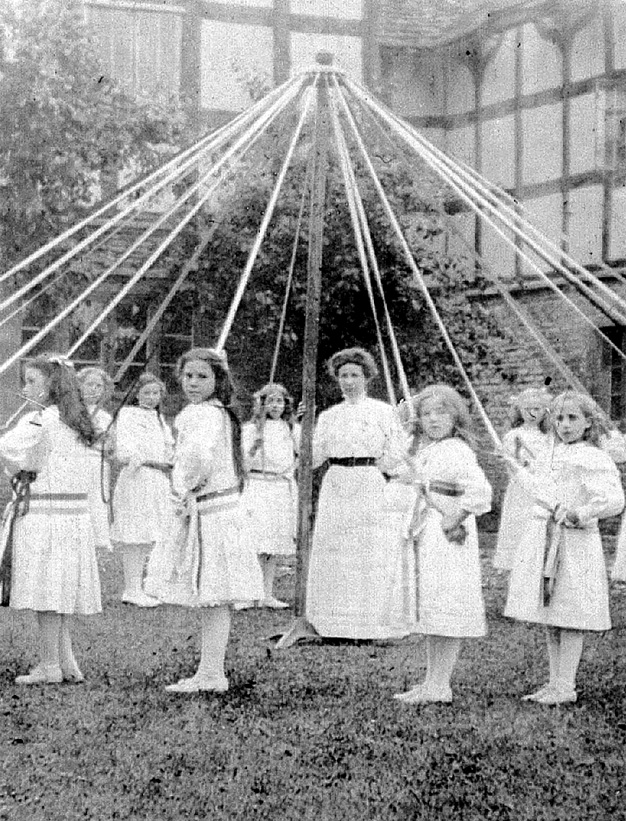
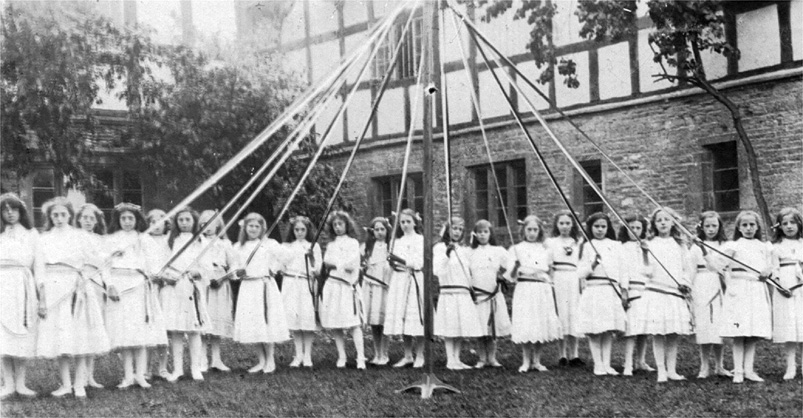
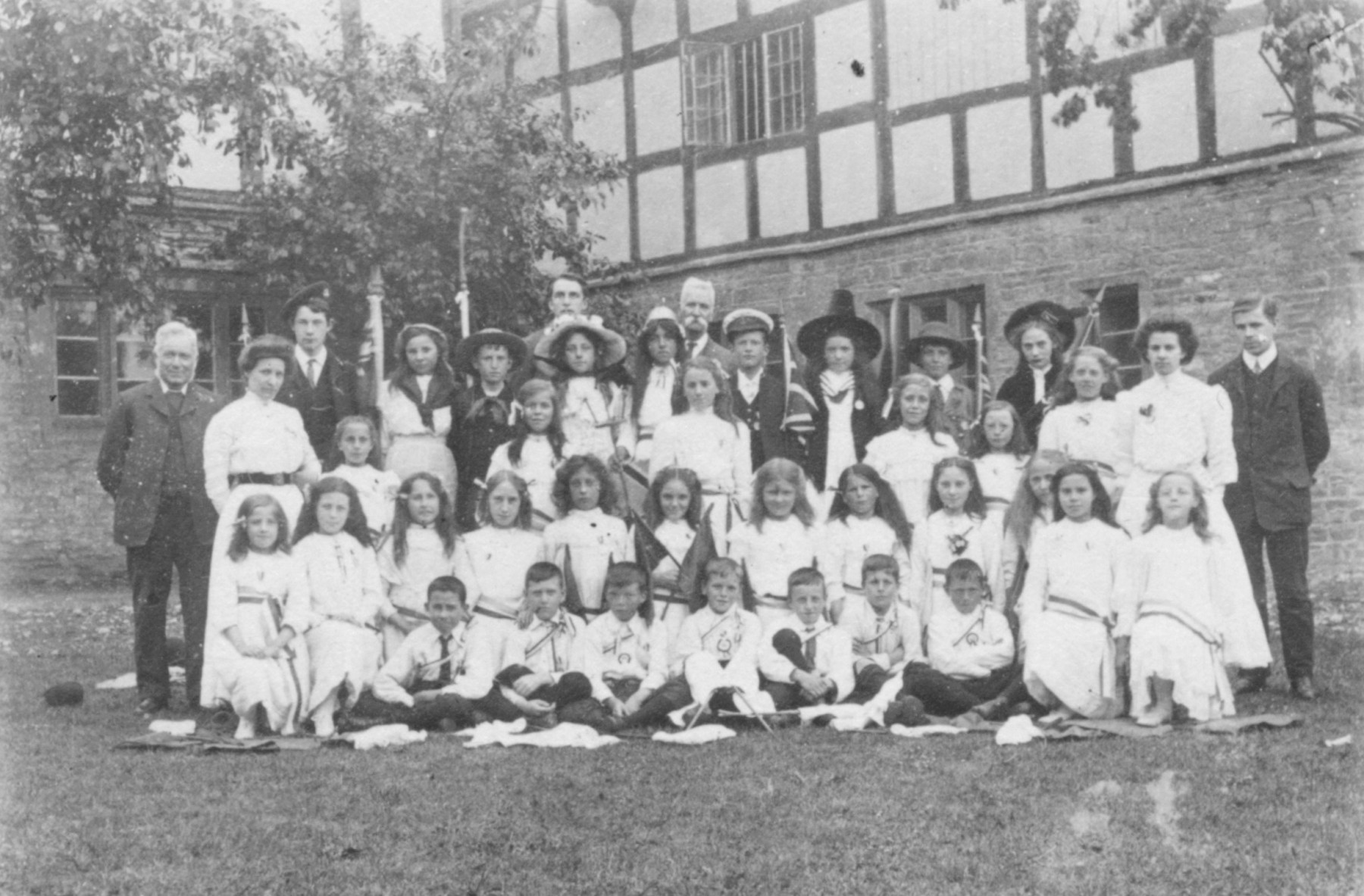
Coronation Day in Aldington
The Evesham Journal also gave an account of the events in Aldington, which began with a hot dinner for the adults at 1 pm. A collection had been made in the village for the sports fund, and a full programme of events for children and adults was arranged which took place in a field lent by Alfred Butler, tenant of Aldington Manor. During the interval, at about 4.30 pm, the children had a meat tea and cakes, and while seated Mrs Julia Butler presented each child with a new coin received from the Royal Mint on the morning of Coronation Day. The adults also had tea after the children had finished, afterwards adjourning to the field for the other competitions arranged by the sports committee. In the evening all made their way again to the barn (also lent by Mr Butler), where music, singing and dancing took place until 3 am.
On Friday evening, Aldington parishioners and friends again assembled in the barn and had tea, after which there was much music and dancing – again until 3 in the morning. Mr & Mrs Ernest Butler lent a piano and Frank Hinds played the melodeon. We are told that nearly every person present, young and old, joined in more than one gallop (four abreast) round the barn to the lively airs, “Yip I ady I aye”, “Fall in and follow me”. That, and the “cake walk”, by Messrs C Smith and A Bearcroft, would long be remembered. (The cake walk was a dance which had originated among black Americans in which a cake was awarded as a prize. It had become popular on both sides of the Atlantic with dancers performing a march with intricate steps, including a high-leg prance with a backward tilt of the head, shoulders and upper torso.)
The National Anthem and “Auld Lang Syne” were sung and Mr W Griffin gave some fine selections on his gramophone on both days. During the festivities many cheers were given for the King, Queen and Royal Family. Cheers for the subscribers and workers were also given, and credit was given to the ladies who made the dinner so great a success.
Congratulations were accorded to Mr & Mrs Oliver Harwood on the birth of a son on Coronation Day. [This was Alan Harwood, the youngest of their ten children.]
Coronation Day in Wickhamford
%2003.jpg)
In Wickhamford, doubtless the parishioners had as enjoyable a time as their neighbours in Badsey and Aldington, but the correspondent gave only brief details in the local press. After Divine Service in the morning at the Church of St John the Baptist (at which there were 24 communicants), at 1 o’clock the male residents sat down to dinner in the parish room. The women and children had a meat tea at 4.30 which was followed by sports.
The present-day No 3 Pitchers Hill, Wickhamford, was built in 1911 for the Pethard family and named Coronation Villa in honour of George V’s coronation.
Badsey’s Drinking Fountain
.jpg) A small surplus of money was left over after the Badsey coronation celebrations, so it was decided to devote the money (topped up by money from a subscription list) to a permanent memorial in the form of a fountain to commemorate King George V’s coronation. On the first anniversary of the coronation, the fountain was formally opened by Mrs Eyres Monsell, wife of the MP. The inscribed front panel said: “This fountain was erected by public subscription to commemorate the Coronation of King George V, June 22 1911.” As Julius Sladden, Chairman of the Parish Council, said in opening proceedings: “We generally do things pretty well in Badsey, if not very rapidly.”
A small surplus of money was left over after the Badsey coronation celebrations, so it was decided to devote the money (topped up by money from a subscription list) to a permanent memorial in the form of a fountain to commemorate King George V’s coronation. On the first anniversary of the coronation, the fountain was formally opened by Mrs Eyres Monsell, wife of the MP. The inscribed front panel said: “This fountain was erected by public subscription to commemorate the Coronation of King George V, June 22 1911.” As Julius Sladden, Chairman of the Parish Council, said in opening proceedings: “We generally do things pretty well in Badsey, if not very rapidly.”
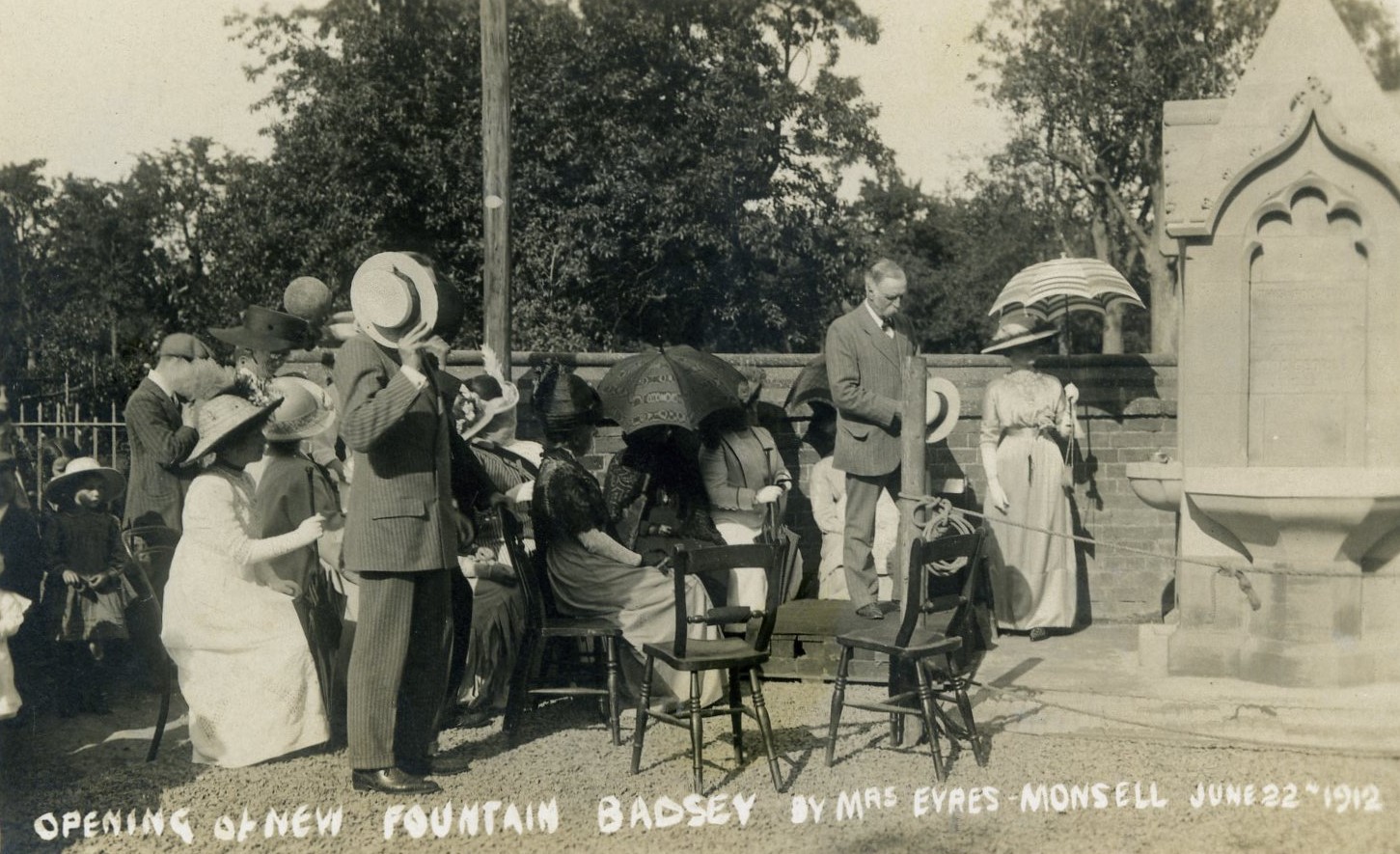
Maureen Spinks, April 2023
